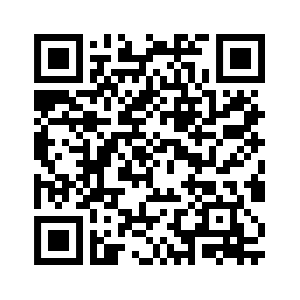3 Reflecting on Your Role as an Educator
As educators, our backgrounds and experiences shape how we teach, how we relate to students, and how we are perceived in the classroom. Factors such as our age, educational journey, professional training, and communication style influence our approach to teaching and classroom interaction. Taking time to reflect on these aspects of ourselves—and how they may affect student learning—can help us become more effective, responsive instructors.
This chapter draws on ideas from Picture a Professor by Jessamyn Neuhaus and How Learning Works by Lovett et al. (2023) to offer strategies that help instructors examine their teaching practices and continue growing in their craft.
How Experience Shapes Teaching and Learning
Awareness of Personal Teaching Habits
Like students, instructors bring expectations and assumptions into the classroom. These often stem from our own educational experiences and can influence how we design assignments, communicate expectations, and interact with students.
For example:
-
An instructor who thrived in lecture-based classes may lean on that format, without realizing that other approaches might better support today’s learners.
-
A faculty member’s background might shape their perception of what constitutes “preparedness,” potentially overlooking students with different types of prior schooling.
Self-reflection helps us examine these tendencies and adjust our teaching strategies to better serve a wider range of students.
Building on Strengths and Areas for Growth
Every instructor brings valuable strengths to the classroom—whether it’s mentoring students, giving dynamic lectures, or leading engaging discussions. Recognizing these strengths is important, but so is identifying areas that may benefit from adjustment. Some teaching practices, while familiar or comfortable, may not work equally well for all students.
Regular reflection on what’s working—and what might be improved—helps instructors make intentional choices that increase clarity, connection, and student success.
Rethinking Traditional Models
Many faculty design their courses based on how they were taught. While this can be a helpful starting point, student backgrounds, access to resources, and learning needs have changed significantly over time. Re-evaluating familiar practices and trying new approaches—such as varied participation options or flexible deadlines—can help instructors meet students where they are today.
Navigating Student Perceptions
Students, too, bring expectations into the classroom—shaped by their prior experiences, cultural norms, and assumptions about authority. Some may respond more readily to direct instruction, while others expect more collaboration or discussion. Faculty who are younger, career-switchers, or come from different cultural or professional backgrounds may find that students interpret their authority differently than expected.
Rather than seeing these differences as obstacles, faculty can view them as opportunities to clarify expectations, build trust, and communicate their teaching approach transparently.
Strategies for Reflection and Responsive Teaching
Being aware of how our own habits and assumptions influence teaching is the first step toward growth. The strategies below are designed to help instructors reflect, adjust, and connect with a wide range of learners.
Consider Assumptions About Students
What do you assume about students’ readiness, responsibilities, or communication preferences? For example:
-
Do you expect all students to have access to course materials, reliable internet, or quiet study spaces?
-
Are you interpreting silence as disengagement, rather than considering other possible factors such as shyness, competing responsibilities, or unfamiliarity with classroom norms?
Action Reflection
Reflect on How Your Background Shapes Your Teaching
Your professional path, values, and previous experiences influence what you prioritize in the classroom. Becoming more aware of these influences can help you recognize when they align well with student needs—and when small shifts could help more students succeed.
Action Reflection
Learn About Student Experiences
Staying curious about the varied experiences students bring to the classroom helps instructors stay flexible and build connection. This doesn’t require formal training—it can begin with listening, paying attention to patterns, and remaining open to feedback.
Action Reflection
Talk with colleagues or student support staff, read student surveys, or invite students to share (anonymously or voluntarily) what helps them learn best. Keep track of what surprises you and what strategies seem to help.
Prepare for Sensitive Moments
Some classroom moments—especially around controversial or emotional topics—require thoughtful planning. Having a plan for respectful dialogue and classroom management can reduce stress and increase student confidence.
Action Reflection
By reflecting on your teaching practices and making space for growth, you can build a classroom environment where students feel supported and challenged to succeed. These strategies are not about changing who you are as a teacher—but about growing into the best version of that role.
Bonus Podcast
Get to know some colleagues at ETSU and hear their stories and their thoughts on teaching. This podcast celebrates the faculty of East Tennessee State University by amplifying their stories. Faculty guests discuss why they are passionate about teaching and share what impact they hope their students will make on the world. The podcast is hosted by Dr. Kimberly D. McCorkle, ETSU Provost and Senior Vice President for Academic Affairs.
Why I Teach: Conversations with ETSU Faculty

Sources and Attribution
Primary Sources
This section is informed by and adapted from the following sources:
- OneHE. Picture a Professor: An Interview with Jessamyn Neuhaus.
- Available at: OneHE Website
- Lovett, M., Ambrose, S., Bridges, M., DiPietro, M., & Norman, M. (2023). How Learning Works: 8 Research-Based Principles for Smart Teaching.
Use of AI in Section Development
This section was developed using a combination of existing research, expert-informed insights, and AI-assisted drafting. ChatGPT (OpenAI) was used to:
- Synthesize and structure key concepts from teaching and learning research into a cohesive and accessible guide for educators.
- Clarify best practices for inclusive teaching, faculty identity, and evidence-based learning strategies.
- Enhance readability and coherence, ensuring that the material is both research-based and practically applicable across diverse teaching contexts.
While AI-assisted drafting provided a structured foundation, all final content was reviewed, revised, and contextualized to ensure accuracy, pedagogical effectiveness, and alignment with cited sources. This section remains grounded in institutional best practices and respects Creative Commons licensing where applicable.
Media Attributions
- frame (41)
